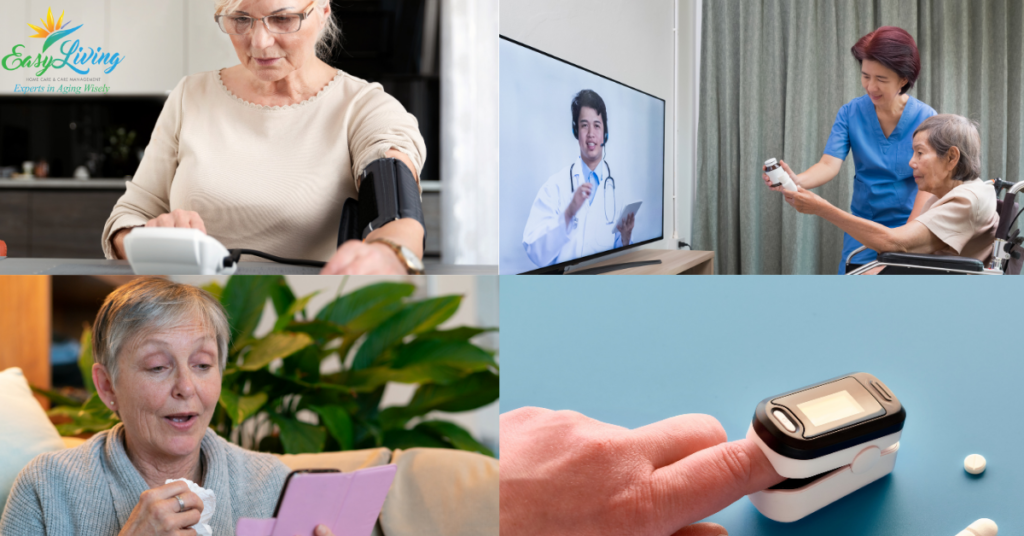So, is telehealth just another change we’ve had to put up with during the pandemic? Is it a poor replacement for in-person medical visits?
While this may be the impression some people have, it is by no means the case. You will want to use telehealth for all the ways it can benefit you, not just because you have no option. Yes, our hands may have been forced by the pandemic. However, those experiences are showing us the positive side of telehealth.
For example, 57% of providers view telehealth more favorably than before COVID-19.
Most patients also appear to like telehealth once they’ve experienced it.
- 65% say it is because the visits are more convenient than meeting their physician in an office. Meanwhile, 63% say they like not having to worry about being exposed to other potentially sick patients, which does not just mean Covid.
- A further 44% say they think it is easier to make a telehealth appointment.
- And, 38% say they like how streamlined follow-ups and communications after the appointment are.
Telehealth is More Than You Think
Telehealth can be defined as “the delivery and facilitation of health and health-related services including medical care, provider and patient education, health information services, and self-care via telecommunications and digital communication technologies”.
Telemedicine, or more broadly telehealth, is not simply a doctor’s visit via video call. It can encompass things like:
- Health education
- Online assessments
- Wearable devices
- Remote patient monitoring
- Vital sign tracking
- Provider-to-provider communication
- Patient portals
- Emails, texts and other means of communicating with medical providers
- Online medical records
- Health apps
- Video conferencing
- Care monitoring/caregiver tools
As a matter of fact, you’ve likely been using telehealth without even calling it that. The long-used “fall button” (emergency response system) is one example that’s been around for a long time. And, today those systems have gotten more sophisticated and continue to improve. Telehealth simply takes the advantages we see in other areas of our life from technology and applies them to improving health.
Telehealth for Better Outcomes
As a recent article on telehealth shared: “Today’s healthcare providers are seeking modern, impactful ways to maximize patient engagement, improve outcomes and enable more timely, efficient connections between patients and their trusted physicians.”
Too often, healthcare has been separate from the daily life of the person it is treating. In reality, we know that health does not occur in a vacuum. Lifestyle and what actually happens day-to-day will impact outcomes. For example, the patient who is unable to read their medication bottles might suffer medication errors. Also, someone who is going through a health crisis but has no energy to prepare meals may be weaker or unable to recuperate. Yet, in a doctor’s office all of this is invisible. The practitioner is left wondering why the person is getting healthier.
Now, care technology and remote monitoring can provide medical professionals quick feedback. They can monitor signs and symptoms in ways they couldn’t traditionally.
Telehealth helps with accessibility and patient engagement. By being more convenient, it can prevent missed appointments and help keep things on track. Telehealth allows for more connections, instead of waiting on often very sporadic office visits. Therefore, less gets overlooked and practitioners can spot problems earlier.
Studies already show the results. One telehealth program to improve care management for patients with chronic conditions has cut ER visits in half. And, hospitalizations were reduced by 90%. Even conservative estimates expect wider use of telehealth to reduce ER visits by at least 20%.
Telehealth’s Particular Benefits for Elders
Many older adults have multiple conditions and take several medications. They are the patients who stand to benefit from telehealth most. Telehealth can keep them connected with their medical providers. And, it can keep those providers/the system of care more coordinated.
It also can keep them connected to family members, who are also key to troubleshooting. Now, you can see Mom and use care technology tools to check on her. When you’ve been concerned about an elderly parent and all you hear is “I’m fine”, you know just how much this means. You can begin to imagine how it will help us stay home independently longer and stay healthier.
Another aspect of telehealth is, of course, convenience. Obviously, patients have discovered that’s a positive aspect of it. But, this is especially significant for elders. First, they tend to have more medical appointments. Therefore, telehealth can make all that much easier to manage. And, it can cut down on hours of time spent in and getting to and from appointments.
Second, many elders have transportation and mobility challenges. Telehealth offers them new accessibility. Elders are more likely to need to get feedback from their doctors more often due to managing multiple conditions, being more prone to side effects, etc. Telehealth has already made a significant difference in easing communications. Obviously, it depends how it is done, but technology can clearly keep us more connected.
How to Best Use Telehealth
Now that we’ve hopefully convinced you why you want to be using telehealth, let’s talk about how. Though the tools can provide numerous advantages, they are just that…tools. The key is to use them in ways that make life easier and lead to better health.
The first step is to find out what’s available. Your care manager can help assess what might help you most, where there are gaps in your care coordination, and explore options. Different doctors and hospital systems offer different tools. And, there is a lot you as an individual or family can access. This might include wearable devices, electronic medication management, reminder apps, and remote caregiver monitoring. Even simple devices like Alexa or Google Home are chock full of health and lifestyle support for elders.
Next, you need to be sure you have the technology or devices set up you need for access. This is where family members (or our care team) come in for those elders who aren’t super comfortable with tech. Some simple technology can enable a lot of access. It needs to be set up correctly to avoid frustration. A quick tutorial or a simple step-by-step for the elder can make all the difference. Read our 17 Tips to Make the Most of Your Telehealth.
Just like when you go to the doctor, you should prepare for any telehealth visits. We’ve created a quick checklist tailored to telehealth visits to help you be comfortable and prepared. It will ensure you get the most out of your telehealth appointment.








